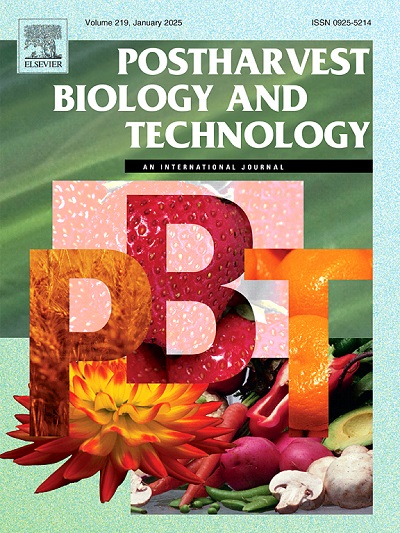Broccoli stem extract enhances browning inhibition in fresh-cut peach fruit by inhibiting polyphenol oxidase activity and improving antioxidant capacity
IF 6.4
1区 农林科学
Q1 AGRONOMY
引用次数: 0
Abstract
This study focused on the anti-browning effect of broccoli stem extract (BE) on fresh-cut peaches. Compared to L-cysteine (L-Cys), BE showed the higher inhibition of the surface browning in fresh-cut peach fruit. This was accompanied with a more decreased polyphenol oxidase (PPO) activity and down-regulation of PpPPO expression. BE showed a non-competitive inhibition for peach PPO, and the highest inhibition rate (85.23 ± 3.86 %) was found when PPO catalyzed the oxidation of catechol. Furthermore, sulfur-containing compounds, including methylthiouracil (MTU), S-Methyl methanethiosulfonate (MMTS) and thiophene, 2-propyl- were identified in BE and shown to inhibit PPO activity. The molecular docking also indicated that these three compounds spontaneously bound PPO via hydrogen bonding, π-π conjugation and hydrophobic interactions, resulting in the PPO inhibition and its associated browning. BE also increased the total phenol and flavonoids content as well as antioxidant capacities in fresh-cut fruit, suggested by increased activities of catalase (CAT), ascorbate peroxidase (APX) and 2, 2′-azino-bis (3-ethylbenzothiazoline-6-sulfonic acid) (ABTS) free radical scavenging rate. Therefore, BE could be a natural anti-browning agent that can be used for the inhibition of PPO-initiated discoloration in peach fruit.
求助全文
约1分钟内获得全文
求助全文
来源期刊

Postharvest Biology and Technology
农林科学-农艺学
CiteScore
12.00
自引率
11.40%
发文量
309
审稿时长
38 days
期刊介绍:
The journal is devoted exclusively to the publication of original papers, review articles and frontiers articles on biological and technological postharvest research. This includes the areas of postharvest storage, treatments and underpinning mechanisms, quality evaluation, packaging, handling and distribution of fresh horticultural crops including fruit, vegetables, flowers and nuts, but excluding grains, seeds and forages.
Papers reporting novel insights from fundamental and interdisciplinary research will be particularly encouraged. These disciplines include systems biology, bioinformatics, entomology, plant physiology, plant pathology, (bio)chemistry, engineering, modelling, and technologies for nondestructive testing.
Manuscripts on fresh food crops that will be further processed after postharvest storage, or on food processes beyond refrigeration, packaging and minimal processing will not be considered.
 求助内容:
求助内容: 应助结果提醒方式:
应助结果提醒方式:


